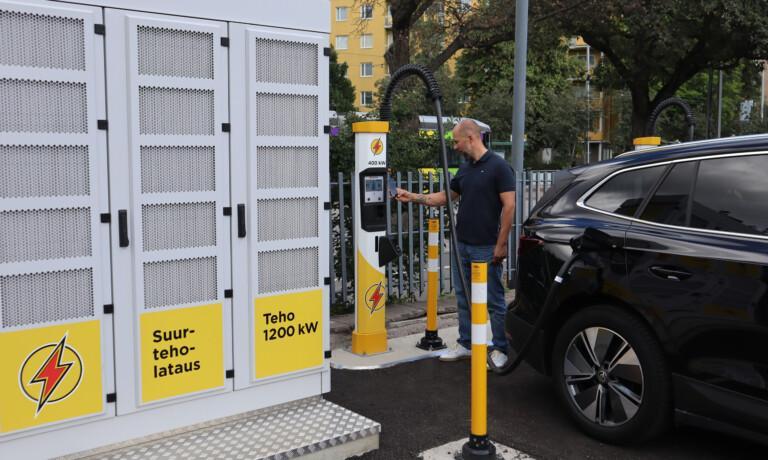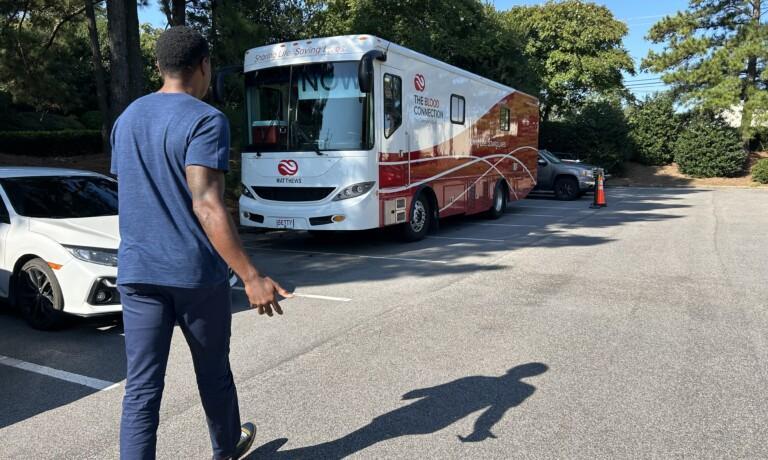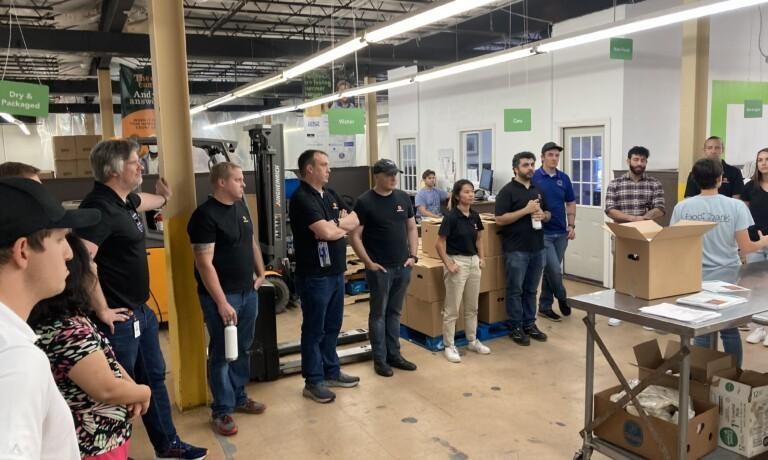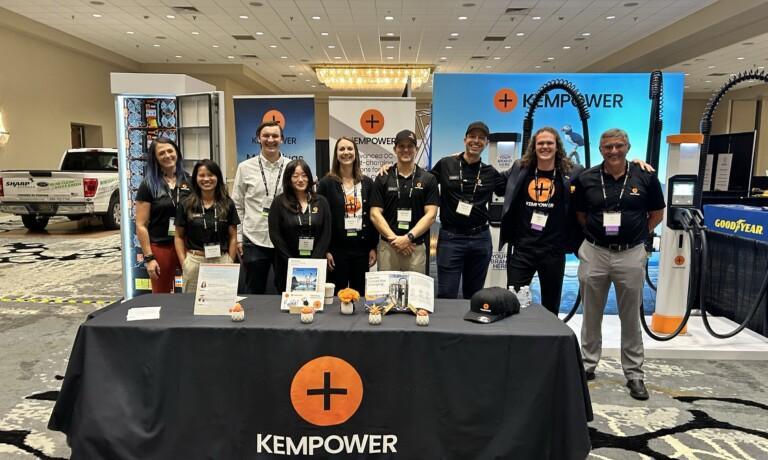Electric Future: Kempower’s Surprising Technological Advantage
In the electric future, there will be more electric vehicles, and a demand for higher charging capacity. With Kempower’s solution it is easy to scale up the number of charging posts and power. Kempower’s underlying technology has been tested in Siberia and CERN’s particle accelerator.
We are expecting substantial growth at least until 2030. The forecasts indicate a 30 to 40 percent yearly growth for EV charging business. In Norway, over 50 percent of the new cars are electric. If other countries come five years behind Norway, we are still looking at a long-term growth.
Tomi Ristimäki, Kempower’s CEO
The charging solutions market is still growing in Norway too – most recently in the country’s coastal area, where Kempower has delivered the world’s first high-speed electric boat charging stations.
So, when talking about electric future, it is not only about electric cars. In fact, Kempower also provides charging solutions for working and mining machinery, electric bus depots, electric taxis and even electric race cars.
Kempower’s EV charging system is made for outdoors and heavy duty usage
Several charging cabinets and a fourfold number of “satellites” or charging posts are coming out of Kempower’s factory every day. The charging cabinet is full of connectors and switches, and the cables are hidden.
The lower section hosts the Ethernet port, and GSM and Wi-Fi connections. The dynamic module on the top section controls the power distribution of the charging field. The power module, which is the actual charger, is the heart of the system.
We take advantage of mass customisation, so the customers get to choose the desired power and paintwork in the last stages of the production.
Tomi Ristimäki, Kempower’s CEO
While the charging market is growing, the competition is getting fiercer. However, Kempower has a surprising technological advantage.
Kempower’s true asset is the power supply, that counts as an independent unit. The satellite-like charging posts are located in the charging field independently. The power is distributed according to the cars’ needs.
If there are many cars in the charging field at the same time, the charging power is distributed dynamically between them. When looking at the electric future, there will be more electric vehicles, thus a demand for higher fast charging capacity. With Kempower’s solution it is easy to increase the number of charging posts and power. If you want more power, you can do so by increasing the power of the charging cabinet.
Having a technological advantage, the price competition doesn’t seem that significant. Our system is, by definition, a smaller investment, since it doesn’t require a power unit for each parking lot and the power is distributed.
Tomi Ristimäki, Kempower’s CEO
The competitors do not yet have such a power distribution system. “I’m sure we’ll see some of those in the future, but they are not easy to make. The structure of our power supplies also favours the distribution system, since they were designed for it.”
The charging posts are often at the mercy of the weather. Kempower’s underlying technology is the same as in Kemppi’s welding machines, which have been used in Siberia for decades. They are made for outdoors and heavy duty usage, and this has been company’s chief asset since the beginning.
Kempower’s biggest import destinations are currently Sweden and Norway, now the eyes are turning to Central Europe and the British Isles.
Currently, the market is growing fast. And this is only the beginning of the electric future.
The number of electric cars will be significant only after 2025, and the electric car demand seems to be accelerating. Only a shortage of some production material could slow down the demand, but so far there are no signs of such a long-lasting shortage.
Tomi Ristimäki, Kempower’s CEO
Kempower’s solution was the only one to meet the high standards of CERN
The history of Kempower goes far. In the 1960s, as part of the welding machine business, Kemppi Group had a team specialised in electrical equipment whose task was to explore what else the welding power source could be utilised for.
Back then, the company delivered their first battery chargers, and in the 1970s, they provided the power supplies for the display board of the Olympic Stadium in Helsinki. The experiments continued.
Already in the 1990s, the company was making the first electric car chargers, which were used to charge the Elcat delivery vans of Posti, the leading postal service provider in Finland.
In 1997, Kempower became a company of its own for the first time. In the beginning of the 2000s, the company delivered around 1,000 units of 2,000 Amp power supplies for CERN’s particle accelerator. Kempower’s solutions was the only one to meet the high standards, which certainly proves the high knowledge and expertise of the company. Even today, most of the electricity for the particle accelerator is produced with Kempower’s power supplies.
In 2011, Kemppi Group started to investigate the EV fast charging business. The new era began with a market survey conducted in 2017. According to the survey, the market was soon becoming interesting. EV charging business was chosen as one strategic path for the Kemppi Group. The engineers affirmed that they could make the equipment, so the board decided to invest and transfer the business to Kempower.
Kempower set a goal to develop a modular charging system that could be used to charge electric cars as well as utility vehicles and working machinery. Customers for the prototypes were quickly found, and the CEO Tomi Ristimäki came on board in 2019.
Since then, the pace has been fast.
In the electric future, Kempower’s EV charger identifies the car automatically
Nowadays, charging an electric car is typically paid with a mobile phone app or a pre-ordered RFID tag. Paying with debit card is technically possible, but the EU legislators are pondering whether electric car charging is considered as a small purchase that can be authorised by contactless payment.
We are already delivering charging stations with contactless payment to the UK. Apparently, Brexit has made regulation easier. As an electric car driver, I find paying with an RFID tag the easiest. I always have them with me in the car, and I don’t need to take out my mobile phone or debit card.
Tomi Ristimäki, Kempower’s CEO
In the future, the charger may identify the car and the payment may also take place automatically.
As for utility vehicles, we already identify them automatically. So, it is possible, but a large number of passenger car brands do not allow identification at the moment.
Tomi Ristimäki, Kempower’s CEO
Kempower is ready for the electric future.

AFIR: Ein Leitfaden für konforme Lösungen zum Laden von Elektrofahrzeugen

Navigating AFIR: A Guide to Compliant Electric Vehicle Charging Solutions

How Kempower commits to the UN’s Sustainable Development Goals

Saving Nearly 100 Lives: Kempower Hosts Fall Blood Drive

Kempower Engineers Help Local Seniors in Need

